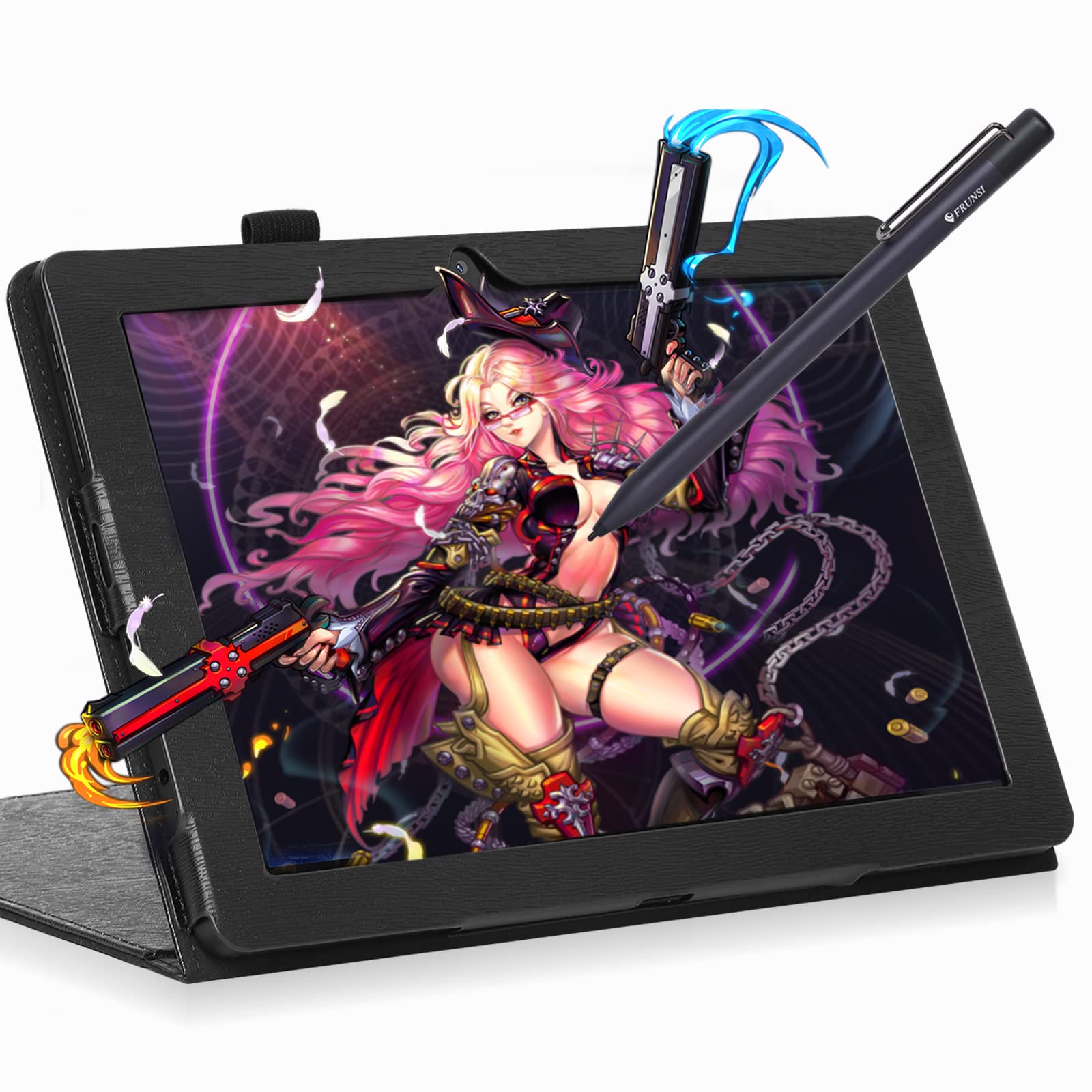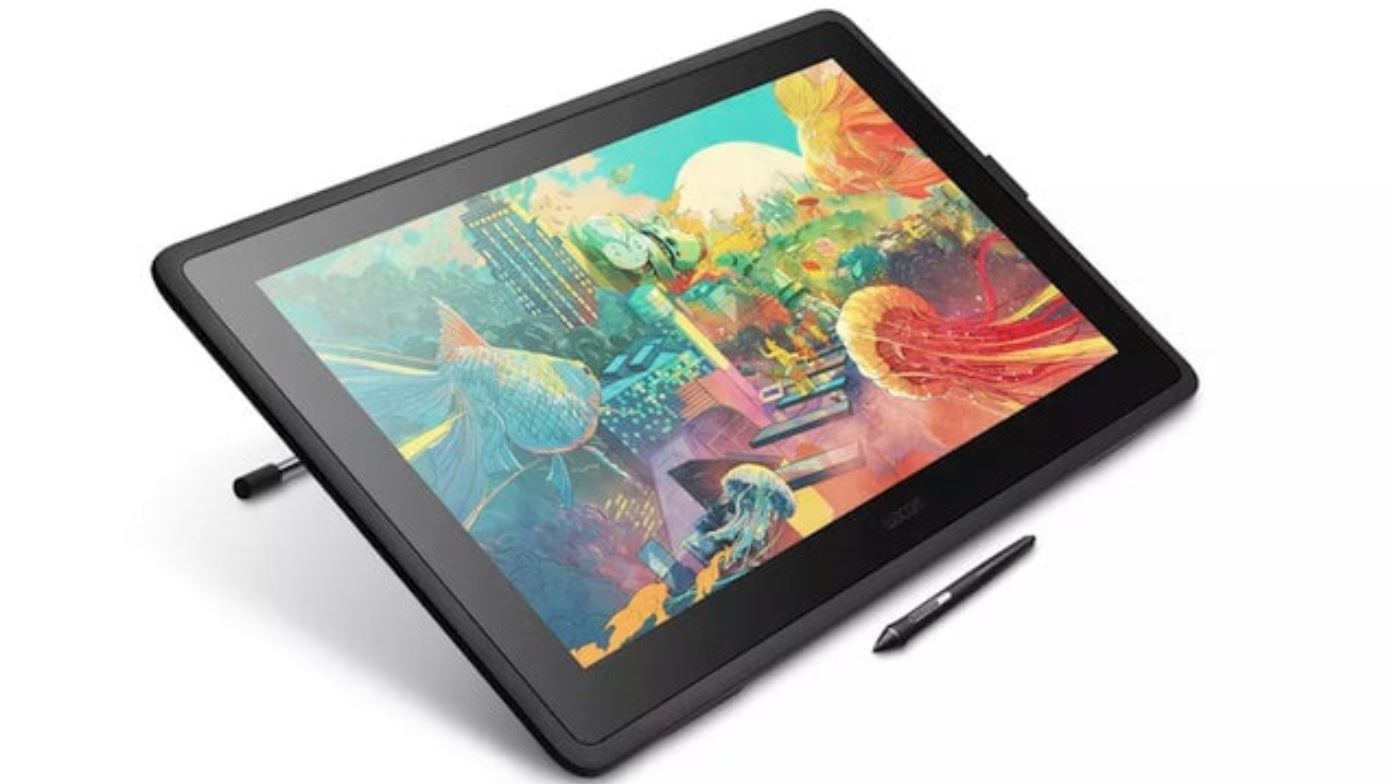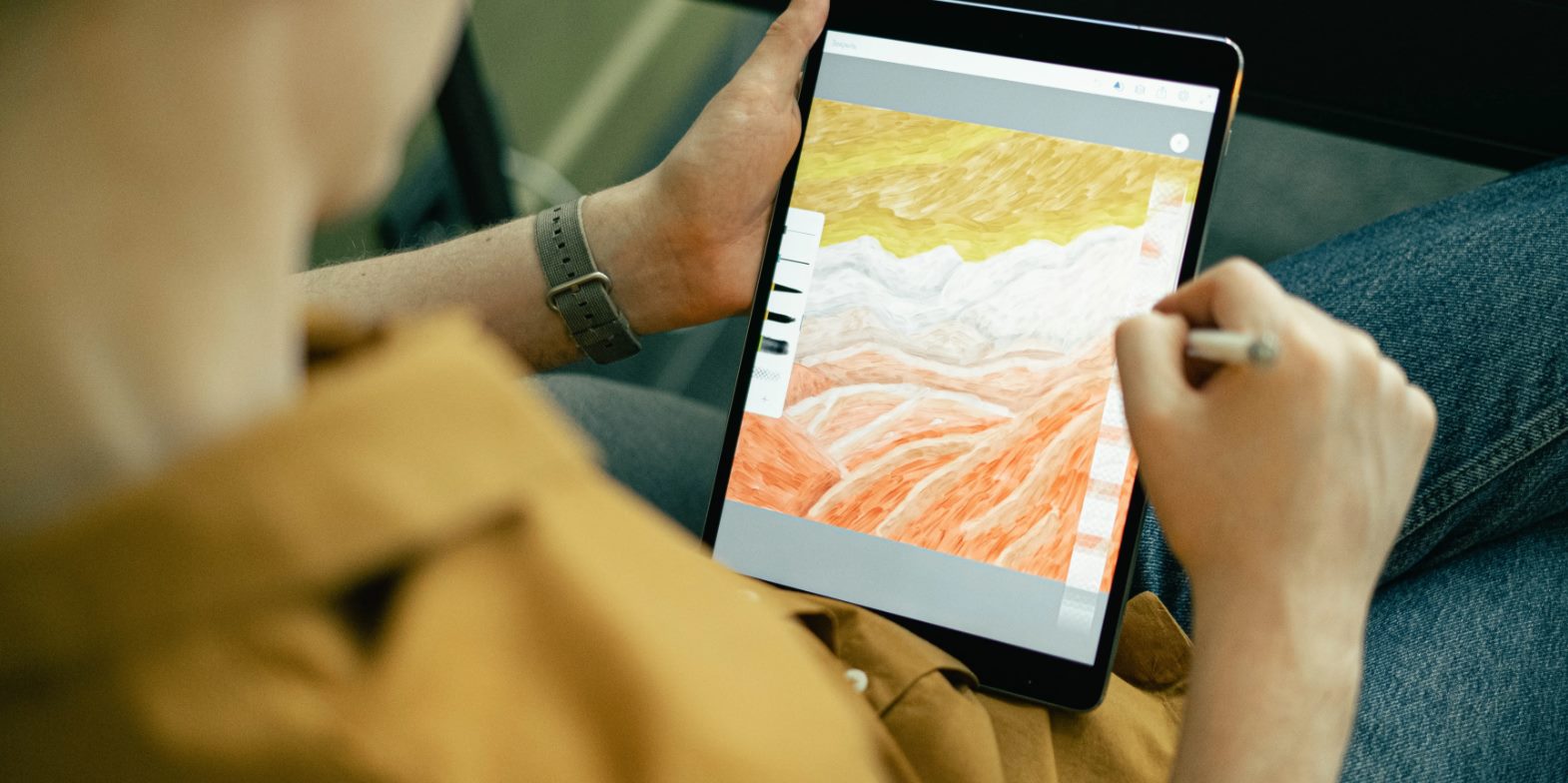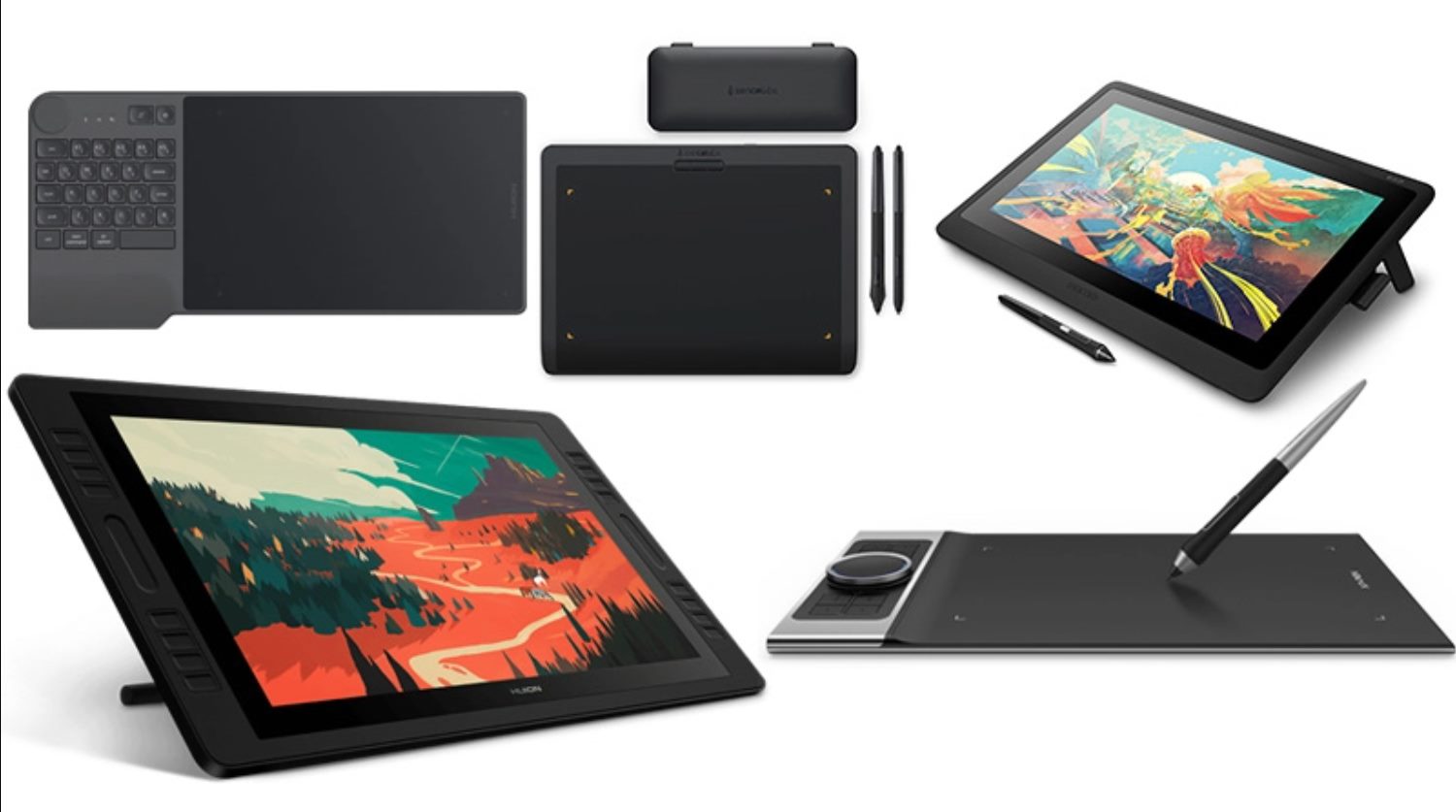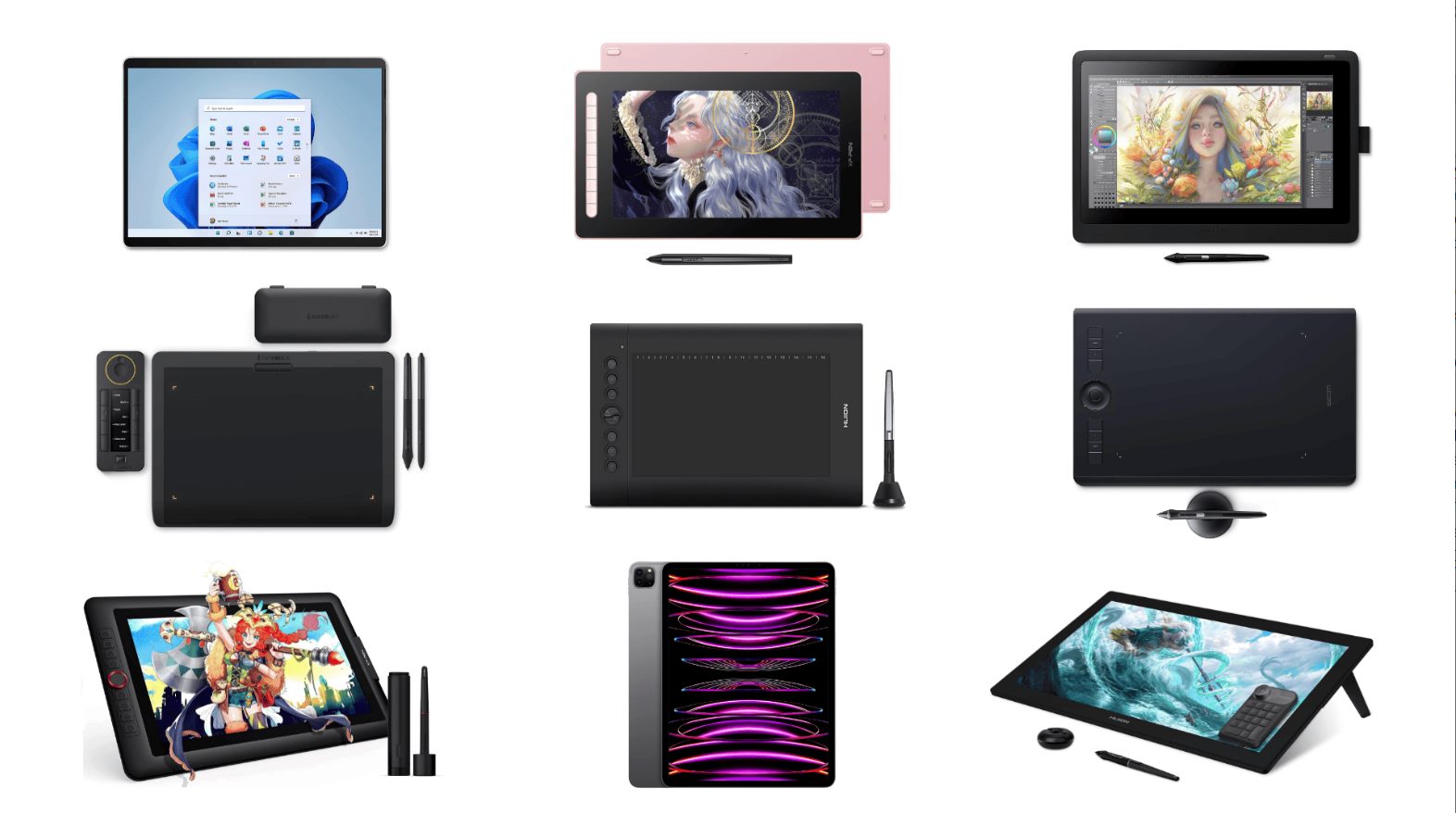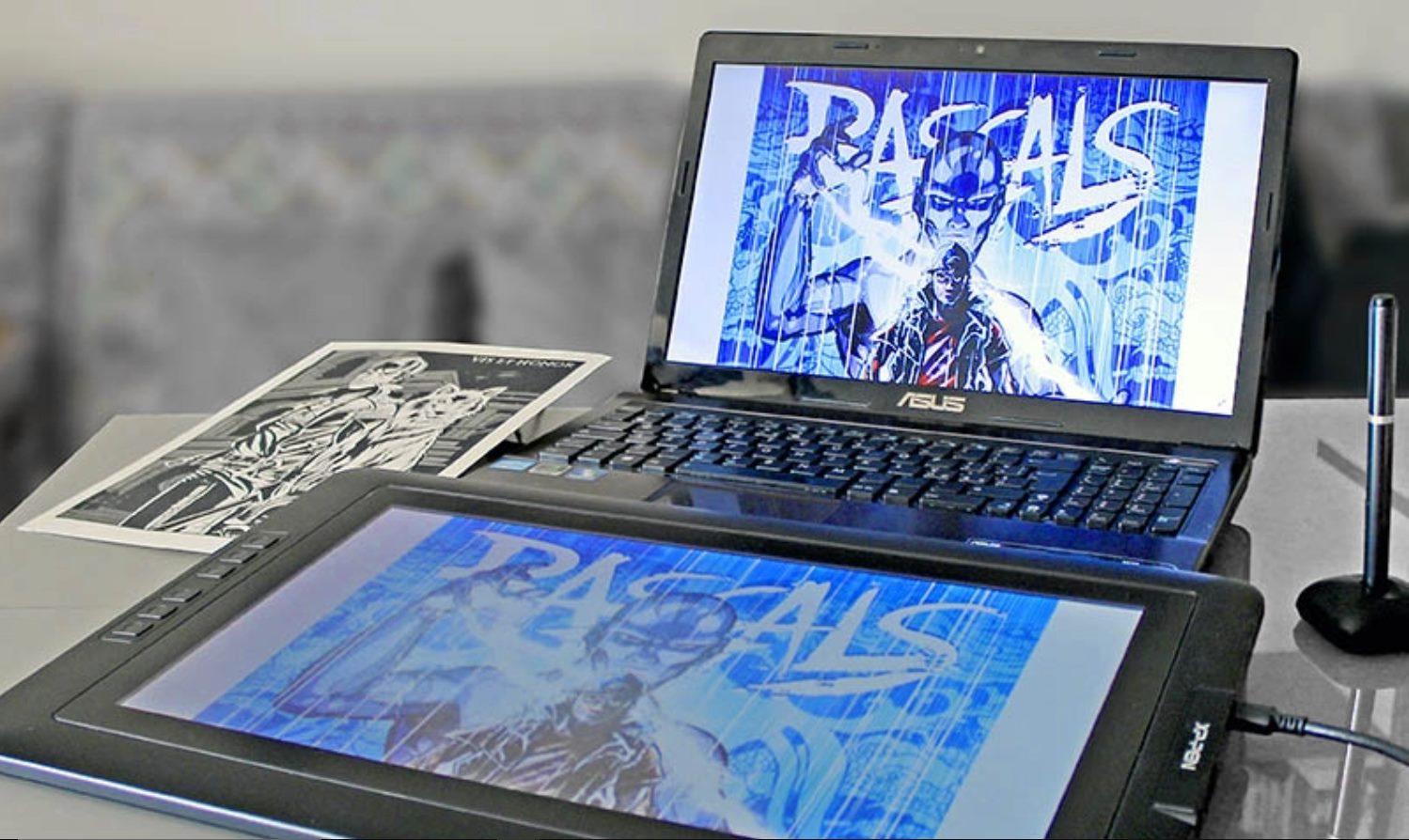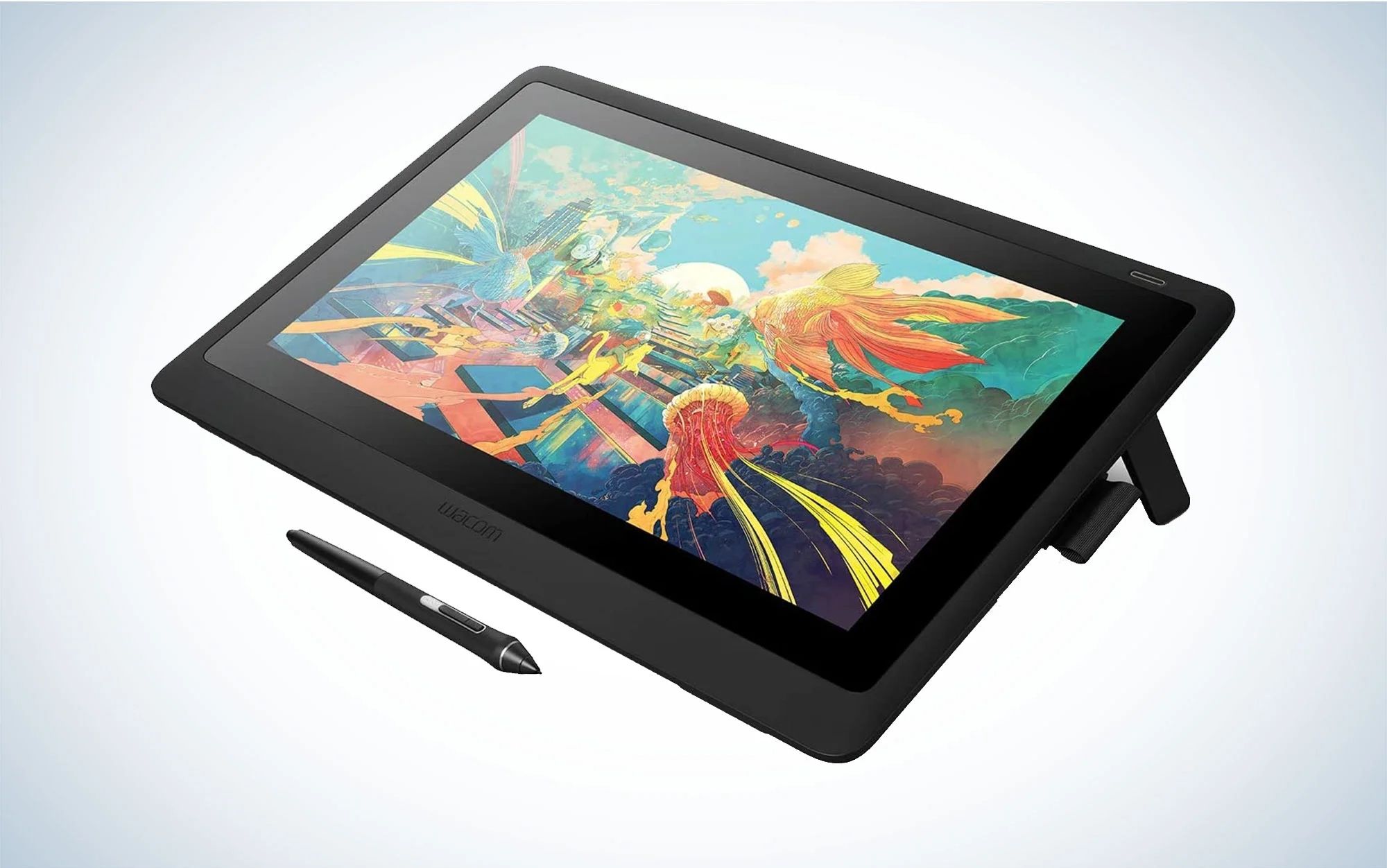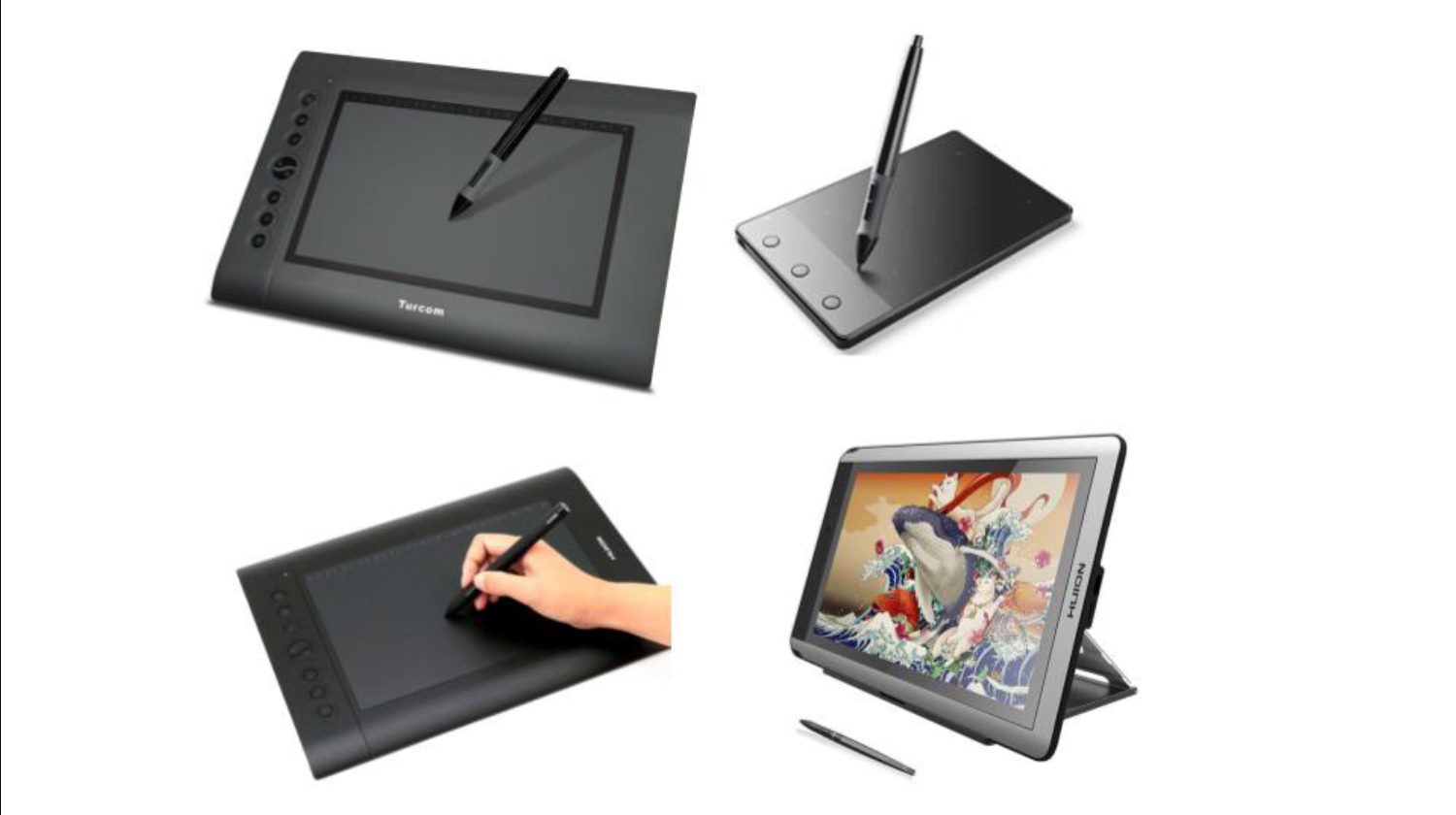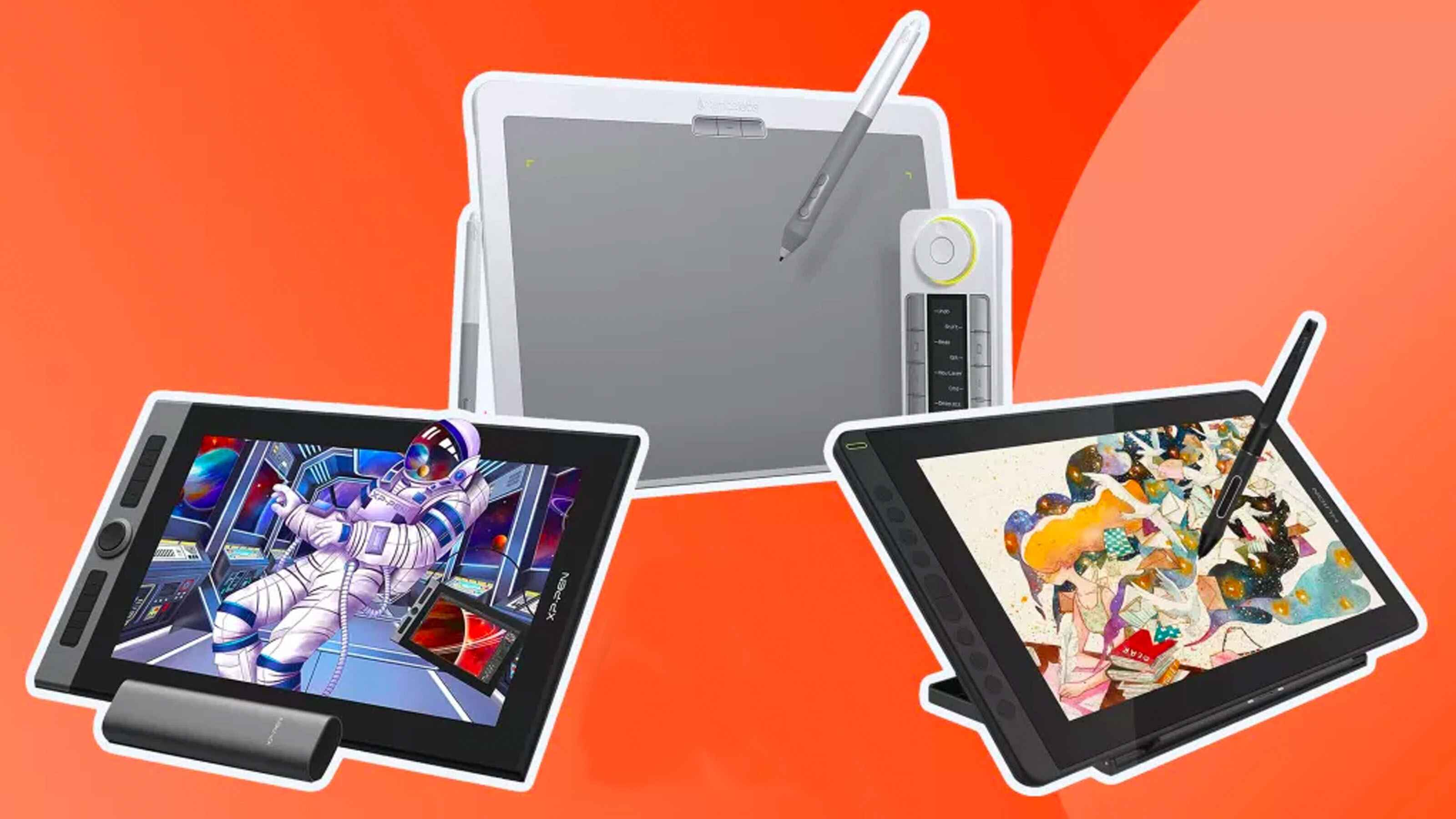Introduction
Technology has revolutionized the way we express our creativity. Drawing tablets have become an essential tool for artists and designers, allowing them to bring their visions to life digitally. While many drawing tablets require a computer connection, standalone drawing tablets offer a unique advantage – they operate independently, without the need for a computer or additional peripherals.
A standalone drawing tablet is a portable device that combines the functionalities of a tablet and a drawing pad. It features a high-definition screen, a stylus, and advanced drawing software, all in a single compact package. This versatility allows artists to sketch, paint, and design on the go, without being tied down to a specific location.
Whether you’re a professional artist or just starting out on your creative journey, a standalone drawing tablet can be a game-changer. It offers a range of benefits and features that set it apart from traditional graphic tablets and even some other tablet-based drawing solutions. In this article, we’ll explore the advantages of standalone drawing tablets, the differences between them and graphic tablets, as well as key features to consider when choosing the right one for you.
So, if you’re ready to take your art to the next level, let’s dive into the world of standalone drawing tablets and discover how they can transform your creative process.
What is a Standalone Drawing Tablet?
A standalone drawing tablet is a portable device that allows artists and designers to create digital artwork without the need for a computer or external hardware. It combines the functionality of a tablet and a drawing pad into a single device, providing artists with a seamless and intuitive platform for expressing their creativity. These tablets feature a high-resolution display, a stylus or pen, and specialized software that supports various drawing and design applications.
Unlike traditional graphic tablets, which require a computer connection to function, standalone drawing tablets operate independently. They have their own operating system and storage capabilities, allowing artists to work on their projects wherever and whenever inspiration strikes. This makes them ideal for artists who are constantly on the move or prefer the convenience of a portable drawing solution.
Standalone drawing tablets offer a range of advanced features that enhance the drawing experience. They often have pressure sensitivity, which means that the strokes made with the pen can vary in thickness and opacity based on the pressure applied. This gives artists greater control over their artwork and allows for more realistic and nuanced drawings. Many tablets also support tilt functionality, which simulates the effect of tilting a traditional brush or pencil, adding further depth and dimension to digital drawings.
Another key feature of standalone drawing tablets is the presence of a high-resolution display. These displays provide vibrant colors and sharp details, allowing artists to see their artwork with exceptional clarity. This is crucial for accurate color representation and precise detailing. Some tablets even offer features like anti-glare coatings or matte screens, which reduce reflection and eye strain, making the drawing experience more comfortable and enjoyable.
Additionally, standalone drawing tablets often come with specialized drawing software pre-installed or offer compatibility with popular drawing applications. These software programs provide a range of tools and features specific to drawing and design, such as various brushes, layers, and blending modes. This allows artists to experiment with different artistic styles and techniques and refine their digital artwork to achieve their desired vision.
Overall, standalone drawing tablets are a powerful and versatile tool for artists and designers. With their portability, advanced features, and intuitive interface, these devices enable artists to unleash their creativity anywhere, anytime, and create stunning digital artwork that rivals traditional mediums. Whether you’re a professional artist, an aspiring designer, or simply someone who loves to explore their artistic side, a standalone drawing tablet can elevate your creative process to new heights.
Benefits of a Standalone Drawing Tablet
Standalone drawing tablets offer a wide range of benefits that make them a preferred choice for artists and designers. Here are some of the key advantages:
- Portability: One of the biggest advantages of a standalone drawing tablet is its portability. Unlike traditional graphic tablets, which require a computer connection, standalone tablets are self-contained devices. This means you can take them with you wherever you go and work on your art projects on the fly. Whether you’re traveling, commuting, or simply sitting in a coffee shop, you have the freedom to create without being tied down to a specific location.
- Independence: Standalone drawing tablets operate independently, which means you don’t need to rely on a computer or external hardware to use them. They come with their own operating system, storage, and software, giving you the freedom to work without any additional devices. This makes them convenient and practical, especially for artists who prefer a streamlined and self-contained workflow.
- High-Quality Display: Standalone drawing tablets are equipped with high-resolution displays that offer excellent color accuracy and sharpness. These displays allow you to view your artwork with exceptional clarity, ensuring that the colors and details are accurately represented. This is crucial for achieving the desired visual impact in your artwork and making precise edits or adjustments.
- Pressure Sensitivity: Many standalone drawing tablets feature pressure sensitivity in their stylus or pen. This means that the tablet can detect the amount of pressure you apply while drawing, resulting in varied line thickness and opacity. This sensitivity mimics the experience of working with traditional art mediums, such as pencils and brushes, allowing for greater control and precision in your digital drawings. It also adds a natural and organic feel to your artwork.
- Advanced Features: Standalone drawing tablets offer a wide range of advanced features that enhance the drawing experience. These may include tilt functionality, which simulates the effect of tilting a traditional art tool, as well as customizable shortcut buttons, multi-touch gestures, and on-screen controls. These features allow for a more intuitive and efficient workflow, giving artists more flexibility in their creative process.
- Compatibility: Standalone drawing tablets are designed to work seamlessly with popular drawing and design software. They often come with pre-installed software or support compatibility with programs like Adobe Photoshop, Corel Painter, and Procreate. This compatibility ensures that you can easily integrate the tablet into your existing workflow and take advantage of familiar tools and features.
These benefits make standalone drawing tablets a compelling choice for artists and designers who value portability, independence, and advanced features. By investing in a standalone tablet, you can enhance your creative process, unleash your artistic potential, and produce stunning digital artworks that captivate both yourself and your audience.
Differences between a Standalone Drawing Tablet and a Graphic Tablet
While both standalone drawing tablets and graphic tablets serve the purpose of digital drawing, there are several key differences between the two. Understanding these differences can help you make an informed decision when choosing the right device for your artistic needs. Here are some of the main distinctions:
- Computer Dependency: The most significant difference between standalone drawing tablets and graphic tablets is their dependence on a computer. Graphic tablets, also known as digitizing tablets or pen tablets, require a computer connection to function. They act as an input device, allowing you to draw on a stylus-sensitive surface while viewing your artwork on a separate monitor or display. Standalone drawing tablets, on the other hand, operate independently and do not need to be connected to a computer to work.
- Portability: Standalone drawing tablets have a clear advantage when it comes to portability. Due to their self-contained nature, they are slim, lightweight, and designed to be easily carried around. You can take a standalone tablet with you wherever you go and work on your art without the need for an additional computer or peripherals. Graphic tablets, being tethered to a computer, are less portable as they require a desktop or laptop to be fully functional.
- Display: One of the key distinctions between standalone drawing tablets and graphic tablets is the presence of a built-in display. Standalone tablets come with their own high-resolution screens, allowing you to directly interact with your artwork on the tablet surface. This feature provides immediate visual feedback and eliminates the disconnect between drawing on the tablet surface and looking at a separate screen. Graphic tablets, on the other hand, rely on an external monitor or display to view your artwork while drawing on the tablet’s surface.
- Software and Applications: Standalone drawing tablets often come with specialized drawing software pre-installed or offer compatibility with popular drawing applications. This allows you to start creating art immediately without the need for additional software installations. With graphic tablets, you may have to purchase or download separate drawing software to fully utilize the tablet’s capabilities.
- Cost: When it comes to cost, standalone drawing tablets tend to be more expensive than graphic tablets. This is due to the inclusion of a built-in display and other advanced features. Graphic tablets, being more basic in nature, are generally more affordable. However, the price range for both types of tablets can vary depending on the brand, size, and additional features.
Ultimately, the choice between a standalone drawing tablet and a graphic tablet depends on your specific needs and preferences. If portability, an integrated display, and independent operation are important to you, a standalone tablet may be the ideal choice. However, if you prefer a more affordable option or already have a powerful computer setup, a graphic tablet can be a suitable alternative for your digital drawing endeavors.
Features to Consider when Choosing a Standalone Drawing Tablet
Choosing the right standalone drawing tablet is crucial to ensure a seamless and enjoyable drawing experience. Here are some important features to consider when selecting a tablet that suits your needs:
- Display Quality: The display quality is an essential factor to consider when choosing a standalone drawing tablet. Look for a tablet with a high-resolution and color-accurate display that can accurately showcase your artwork. The size of the display is also important, as it affects the drawing area available to you. Consider the resolution, color gamut, and screen technology (such as IPS or AMOLED) of the tablet.
- Pressure Sensitivity and Tilt: The sensitivity and tilt functionality of the stylus or pen is crucial for achieving realistic and nuanced drawings. Look for a tablet that offers a high level of pressure sensitivity, allowing you to control the thickness and opacity of your lines with precision. Tilt functionality simulates the effect of tilting a traditional drawing tool, adding more depth and dimension to your digital artwork.
- Stylus/Pen: Consider the design, grip, and comfort of the stylus or pen that comes with the tablet. Look for a pen that feels natural in your hand and offers a comfortable drawing experience. Some pens may also have additional features such as customizable buttons or eraser functionalities, providing added convenience and flexibility in your creative process.
- Battery Life: Since standalone drawing tablets operate independently, battery life is an important consideration. Look for a tablet with a long battery life that can sustain your drawing sessions without frequent recharging. Consider the charging time and whether the tablet supports fast charging or has the option for a replaceable battery.
- Storage Capacity: Evaluate the internal storage capacity of the tablet, as it determines how much artwork and applications you can store on the device. Some tablets also offer expandable storage options via a memory card or external drives, providing you with more flexibility in managing your digital art files.
- Operating System and App Compatibility: Check the operating system of the standalone tablet and ensure it is user-friendly and compatible with your preferred drawing applications. Different tablets may run on various operating systems, such as Android or iOS, each offering their own ecosystem of supported apps. Research app availability and compatibility, and consider whether you require specific software for your artistic needs.
- Connectivity Options: Assess the connectivity options available on the tablet. Look for features such as Wi-Fi, Bluetooth, USB ports, and audio jacks. These connectivity options enable you to transfer files, connect external devices, or use additional accessories that can enhance your drawing experience.
- Price and Budget: Set a budget for your standalone drawing tablet and consider the price range of different models. Price can vary based on factors such as screen size, display quality, storage capacity, and the overall brand reputation. It’s important to strike a balance between the features, quality, and affordability that align with your artistic requirements.
By considering these features and evaluating their importance to your artistic process, you can narrow down your options and find a standalone drawing tablet that meets your specific preferences and needs. Remember to research different models, read user reviews, and compare specifications to make an informed decision and choose a tablet that will enhance your creativity to its fullest potential.
Popular Standalone Drawing Tablet Brands
When it comes to standalone drawing tablets, there are several reputable brands that offer high-quality devices designed specifically for artists and designers. Here are some of the most popular standalone drawing tablet brands to consider:
- Apple: Apple offers a range of standalone drawing tablets under the iPad Pro series. These tablets feature high-resolution Retina displays, support for Apple Pencil, and powerful processing capabilities. The Apple Pencil delivers excellent pressure sensitivity and tilt functionality, making it a favorite among digital artists.
- Wacom: Wacom is renowned for its expertise in the field of digital drawing tablets. They offer a variety of standalone tablets, such as the Wacom MobileStudio Pro series. These tablets feature high-resolution displays, pen-to-paper feel, and advanced pen technology that provides an exceptional drawing experience. Wacom’s tablets are highly regarded by professional artists for their precision and reliability.
- Microsoft: Microsoft has made its mark in the standalone tablet market with the Surface Pro series. These tablets are versatile, powerful, and come with high-resolution displays and compatibility with the Surface Pen. With the ability to switch between tablet and laptop modes, the Surface Pro tablets offer a seamless transition from drawing to other productivity tasks.
- Samsung: Samsung’s Galaxy Tab S7 and S7+ are popular standalone drawing tablets that provide a rich and vibrant drawing experience. These tablets feature high-resolution displays with AMOLED technology, compatibility with Samsung’s S Pen, and powerful hardware that can handle demanding art applications with ease.
- Huion: Huion is a brand that offers a wide range of affordable standalone drawing tablets. Their tablets feature high-resolution displays, advanced pen technology with excellent pressure sensitivity, and customizable shortcut buttons. Huion tablets are known for their affordability and value for money, making them a popular choice for beginners and budget-conscious artists.
- XP-Pen: XP-Pen offers a variety of standalone drawing tablets that cater to different artistic needs and budgets. Their tablets feature high-resolution displays, pressure-sensitive stylus pens, and customizable shortcut buttons. XP-Pen’s tablets are known for providing a quality drawing experience at a competitive price point.
These brands have established themselves as leaders in the standalone drawing tablet market, offering a range of devices with different specifications and features to suit various artistic preferences. It is important to review the specific models and consider factors such as display quality, pen performance, software compatibility, and overall reputation when choosing a tablet that best fits your artistic needs and budget.
How to Set Up and Use a Standalone Drawing Tablet
Setting up and using a standalone drawing tablet is a straightforward process. Here’s a step-by-step guide to help you get started:
- Unbox and Charge: Begin by unboxing your standalone drawing tablet and accessories. Connect the tablet to a power source and let it charge fully. This ensures that you have sufficient battery life to work on your artwork.
- Power On and Configure Settings: Once the tablet is charged, press the power button to turn it on. Follow the on-screen instructions to set up the initial settings, such as language, date, and time. You may also need to create an account or sign in with your existing account, depending on the tablet’s operating system.
- Connect to Wi-Fi: To access online content, software updates, and cloud storage, connect your standalone tablet to a Wi-Fi network. Go to the settings menu and select the Wi-Fi option. Choose your network from the available options and enter the password to connect.
- Install Software and Updates: Check for software updates for your standalone drawing tablet. Manufacturers often release updates to improve performance, fix bugs, and introduce new features. Install any available updates to ensure your tablet is up to date.
- Calibrate Your Stylus: Most standalone drawing tablets have a calibration process to ensure precise pen tracking. Follow the instructions provided by the manufacturer to calibrate your stylus or pen. This process may involve touching specific points on the screen or following on-screen prompts.
- Explore Pre-installed Apps: Many standalone drawing tablets come with pre-installed drawing applications. Take some time to explore these apps and familiarize yourself with their features. Experiment with different brushes, layers, and tools to get a feel for the software’s capabilities.
- Discover Additional Drawing Apps: If the tablet allows, browse the app store specific to your tablet’s operating system. Explore the wide range of drawing and painting applications available and download those that align with your artistic needs and preferences.
- Experiment and Create: Once your standalone drawing tablet is set up and you’ve installed the desired apps, it’s time to start creating your artwork. Experiment with different brushes, colors, and techniques to explore your creativity. Take advantage of the tablet’s pressure sensitivity and tilt functionality to add depth and realism to your drawings.
- Save and Share Your Artwork: Remember to save your artwork regularly to avoid losing any progress. Standalone drawing tablets usually have built-in storage where you can save your files. Consider backing up your artwork to cloud storage or external devices for additional security. When you’re satisfied with your artwork, share it with others by exporting it in the desired file format or uploading it to social media platforms or art communities.
Setting up and using a standalone drawing tablet is an exciting journey that opens up a world of digital creativity. By following these steps and exploring the capabilities of your tablet, you can unleash your artistic potential and bring your imagination to life.
Tips and Tricks for Using a Standalone Drawing Tablet
Using a standalone drawing tablet can take your digital artwork to new heights. Here are some tips and tricks to help you make the most out of your tablet:
- Experiment with Different Brushes and Tools: Take advantage of the variety of brushes and tools available in your drawing software. Explore different brush textures, sizes, and shapes to create unique effects and textures in your artwork.
- Utilize Layers: Layers allow you to work on different parts of your artwork separately, making it easier to make changes or adjustments. Experiment with different layer blending modes and opacity levels to add depth and complexity to your drawings.
- Customize Shortcut Buttons: Many standalone drawing tablets feature customizable shortcut buttons. Take the time to set up these buttons to perform frequently used actions or access commonly used tools. This can greatly speed up your workflow and enhance your productivity.
- Take Breaks and Rest Your Hands: Drawing for long periods can strain your hands and wrists. Remember to take regular breaks to rest your hands and stretch your muscles. This helps prevent fatigue and discomfort, allowing you to create for longer periods with greater ease.
- Experiment with Textures and Backgrounds: Don’t be afraid to add texture and unique backgrounds to your digital artwork. Explore different brushes and techniques to create textures that mimic traditional art mediums, such as watercolor or oil paint. Consider using textured paper or canvas backgrounds to add an interesting visual element to your drawings.
- Learn from Others: Join online art communities or forums where you can connect with other artists and share your work. Look for tutorials, speed-painting videos, and resources that can inspire and help you improve your digital art skills. Collaborate with others and learn from their techniques and experiences.
- Try Different Art Styles and Techniques: Digital art allows you to explore a wide variety of styles and techniques. Don’t be afraid to step outside of your comfort zone and experiment with different art styles, such as realism, manga, or abstract. Trying out new styles and techniques can expand your artistic horizons and bring fresh perspectives to your work.
- Backup Your Files Regularly: Protect your artwork by regularly backing up your files. Consider using cloud storage services, external hard drives, or online platforms to store copies of your work. This ensures that your precious creations are safe in case of hardware failure or unforeseen circumstances.
- Practice, Practice, Practice: Like any skill, digital art requires practice and dedication. Set aside regular time for drawing and experimentation. Practice different techniques, explore new subjects, and challenge yourself to improve. The more you practice, the more confident and proficient you will become.
These tips and tricks can help you enhance your experience when using a standalone drawing tablet. Remember to have fun, embrace the creative journey, and continually challenge yourself to grow as an artist. With dedication and creativity, your digital artwork will flourish and truly reflect your unique artistic voice.
Conclusion
Standalone drawing tablets have revolutionized the way artists and designers create digital artwork. With their portability, advanced features, and intuitive interfaces, these devices provide a seamless platform for artistic expression. Whether you’re a professional artist or an aspiring beginner, a standalone drawing tablet offers a range of benefits that can elevate your creativity.
In this article, we explored what a standalone drawing tablet is and discussed its advantages over traditional graphic tablets. We also highlighted important features to consider when choosing a standalone drawing tablet, such as display quality, pressure sensitivity, and software compatibility. Additionally, we mentioned popular brands known for their high-quality standalone tablets, including Apple, Wacom, Microsoft, Samsung, Huion, and XP-Pen.
We provided step-by-step guidance on setting up and using a standalone drawing tablet, as well as offering tips and tricks for optimizing your digital drawing experience. From exploring different brush styles and textures to utilizing layers and shortcut buttons, these tips can help you unleash your creativity and take your artwork to new heights.
Remember, using a standalone drawing tablet is all about experimentation, practice, and continuous learning. Embrace the versatility and convenience of these devices, and don’t be afraid to push the boundaries of your artistic abilities. With your standalone tablet as your creative companion, the possibilities are endless.
So, go ahead, grab your standalone drawing tablet, and embark on an artistic journey like never before. Unleash your imagination, bring your ideas to life, and create breathtaking digital artwork that captivates and inspires.







